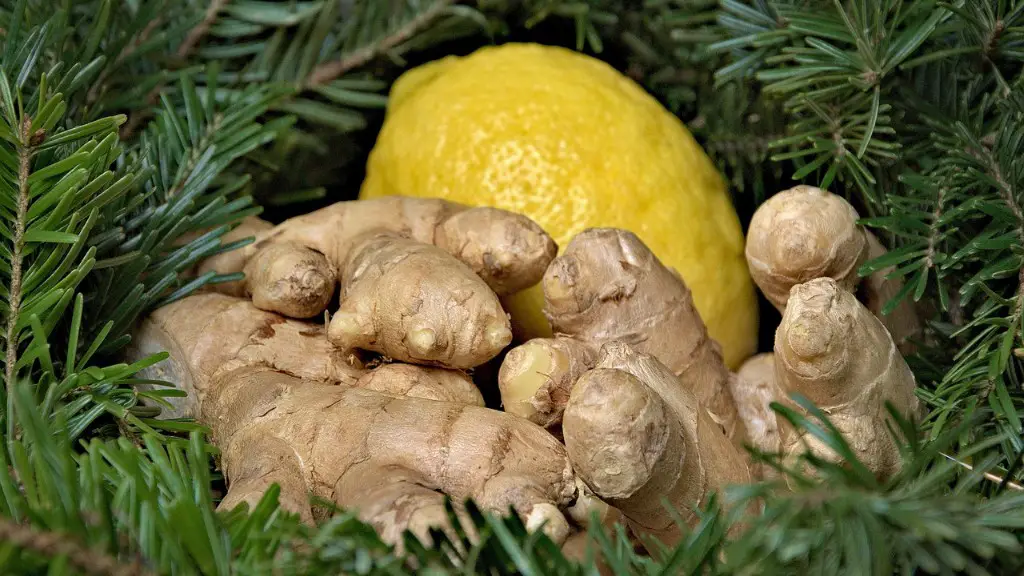Active disease or pest outbreaks can impair a lemon tree’s ability to process nutrients correctly, leading to a range of symptoms that may affect its leaves. To diagnose the cause of the leaves’ problem on your lemon tree, it’s important to look out for some key signs.
You may notice discolored patches appearing on the leaves, or falling off completely, in which case the leaves may be infected with a fungal disease such as anthracnose or powdery mildew. Both these diseases cause leaves to become yellow, brown, or black in color, so be sure to look out for any unusual coloration on the leaves of your lemon tree.
Furthermore, if you observe insects feeding on the leaves of your lemon tree, particularly those of the order Hemiptera such as aphids, mealybugs and scale, this could be the cause of the problem. Damage from these insects can include stippling (where the leaf’s surface is peppered with yellow or white spots), withered leaves, or in severe cases, even the premature shedding of foliage.
Secondly, nutrient deficiency or excess can also lead to your lemon tree’s leaves becoming discolored. If the nutrition received by your plant is deficient in certain mineral elements, the symptoms in the leaves of your lemon tree can become pronounced. Likewise, an excessive amount of certain elements can also cause problems in the leaves.
In some cases, the root structure of your lemon tree may have become damaged and unable to receive adequate nutrients. In extreme cases, the roots may be compromised by root rot or nematoides, so be sure to inspect the root system of your lemon tree for signs of disease.
Finally, environmental factors such as soil pH, temperature, and humidity can also cause leaves of a lemon tree to become discolored or wilt. Be sure to check the lemon tree’s surroundings for any environmental factors which could be causing the tree to become stressed.
In conclusion, to diagnose the cause of the leaves’ problem on your lemon tree, it’s important to look out for some key signs and consider the environmental factors which may have contributed to them becoming discolored or falling off.
Identifying Fungal Diseases
Fungal diseases are distinctive and can be identified by the appearance of spots and lesions on the leaves. Anthracnose is a common fungal disease of lemon trees, and it appears as small, dark spots on the underside of the leaves and can cause them to become yellow in color or curl up. Powdery mildew is another fungal disease that appears as white powdery patches on the surface of the needles, and can cause them to become yellow or brown in color.
It is possible to treat fungal diseases, but prevention is always preferable. Make sure to pick up fallen leaves around the base of the tree, as well as prune diseased branches and remove weeds which could be harboring the spores responsible for the spread of fungal diseases through the air.
It is also important to ensure you water the lemon tree correctly – too much or too little can aggravate fungal problems, so make sure you monitor irrigation closely and adjust when necessary. Fungicides are available from most garden and home centers, but they should be used sparingly to prevent resistance.
Detecting Insect Infestations
An insect infestation can be difficult to spot, but be sure to check the leaves of your lemon tree closely for signs of damage, such as stippling or small white webbing on the leaves. Aphids, mealybugs and scale are the most common culprits of damage to citrus trees such as lemon, and all three can be treated with an appropriate insecticide.
It is also critically important to monitor the bark of the tree, as many insects can hide beneath the bark’s crevices. They can be harder to spot, so use a magnifying glass to inspect closely for any signs of insect activity and be sure to take care of them as soon as possible.
It is also a good idea to spray your lemon tree with an appropriate insect repellent as a precaution against any future infestations. Insect repellents are available at most garden stores, but be sure to read the instructions carefully before using them on your lemon tree.
Dealing with Nutrient Imbalance
If the leaves of your lemon tree are beginning to yellow or turn brown, the root structure could be weakened and unable to process nutrients correctly. Be sure to inspect the root structure for signs of damage, such as discoloration or wilting, and if found, it could indicate a nutrient deficiency.
The primary nutrients manufactured by a lemon tree are nitrogen, phosphorous, and potassium, so adding a foliar fertilizer that contains these elements can help improve the health of your tree. Additionally, it is important to keep the soil pH in check, and it should range between 6.5 and 7.0. If the soil pH is too low, the nutrients in the soil may be locked up and unavailable to the tree, leading to deficiencies.
Application of fertilizer should be done according to manufacturer’s instructions, as too much fertilizer can cause a nutrient salt burn or even kill the tree. Also be sure to mulch the area around your lemon tree, as it will prevent weeds from competing with the tree for moisture and nutrients.
Catering to Environmental Factors
It is important to consider the environmental factors which could be causing stress to your lemon tree. Temperature and humidity can both have an effect on the health of a lemon tree, with extreme temperatures causing leaves to shed prematurely. Make sure to provide your lemon tree with protective shade from the sun and enough water to keep the soil moist, but not wet.
Also, bear in mind that inadequate sunlight can cause the leaves of your lemon tree to become discolored. Be sure to provide your tree with at least 8-10 hours of full sun per day, which can be achieved by planting it in a sunny spot in the garden or by using a shade cloth to filter the sunlight.
Finally, it is important to check the soil around the base of the tree for signs of compaction or waterlogging. Soil that is compacted or waterlogged will not allow roots to develop and they can become damaged, leading to a weakened root structure and a weakened tree.




